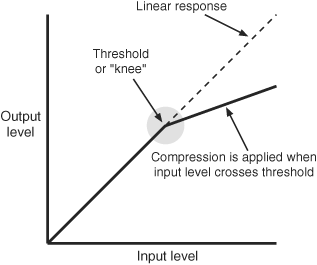Kb. Short for Kilobit (1,024 bits).
KB. Short for Kilobyte (1,024 bytes).
Kbps. Short for Kilobits per second. A measurement of data flow.
KBps. Short for Kilobytes per second. A measurement of data flow.
kernel. The lowest, most basic level of a computer operating system, containing such services as memory management, hardware interfacing, and so on.
kernel panic. An operating system action resulting from a fatal error in a piece of software that is operating at the kernel level, such as a device driver. Usually the panic action consists of displaying a message and waiting for a reboot. Kernel panic can result from hardware failure, bugs, invalid memory addresses, and other errors.
Kerr effect. The operating principle behind magneto-optical drives, where laser light reflected off a magnetized MO disc changes phase to represent binary data.
key. 1. The pitch center in a musical piece or scale. 2. The main performance component of a keyboard instrument. 3. A control input on a dynamics processor, such as a compressor or noise gate, used to trigger the processor from an external source. ![]() See also side chain.
See also side chain.
keybed. 1. A rail in a keyboard instrument that stops the downward travel of the keys. 2. The entire key action in a keyboard instrument.
keyboard. 1. An alphanumeric input device used with computers. 2. Also known as a manual. A musical instrument featuring keys that are pressed by the player to sound notes.
keyboard mapping. ![]() See keymap.
See keymap.
keyboard scaling (a.k.a. rate scaling, level scaling, envelope scaling). A function of some keyboards that allows the key number to be used to modulate a parameter. For example, keyboard scaling might be assigned to change the filter cutoff as higher notes are played, so higher notes are brighter than lower notes.
keyboard split. ![]() See split point.
See split point.
key click. An attack transient that occurs in some Hammond organs. There are nine contacts under each key, one for each drawbar/tonewheel. As the key is pressed, the contacts close at slightly different times, causing a percussive click at the attack of each note. The random phase of the tonewheel results in the key click constantly changing in timbre, making it difficult to duplicate with a synthesizer.
keygroup. Term used by AKAI samplers for a keymap.
key input. ![]() See side chain.
See side chain.
keymap. The assignment of individual samples to a particular key (or keys) on a keyboard. This could be assigning the sampled notes of a piano across the keys to simulate a real piano, or it could be assigning a separate drum sound from a drum kit to each key.
key velocity. ![]() See velocity.
See velocity.
kHz. Abbreviation for kilohertz (1,000 hertz).
kick drum tunnel. A technique used by some engineers for recording kick drum. A tunnel is constructed of blankets, empty drum shells, or other materials that extends out from the front of the kick drum. A microphone is placed at the end of the tunnel and picks up a more ambient sound because of its distance from the drum. The tunnel serves to isolate the distant mic from noise bleed from other drums and instruments in the studio.
kill switch. A switch on some DJ mixers that “kills” or removes certain frequencies. Used as an effect or, when remixing, to remove sounds and instruments so that tracks can be blended together.
kilo. With a lowercase k, a prefix meaning 1,000.
Kilo. With an uppercase K, a prefix standing for 1,024, as used in computer and digital systems. Refers to the binary number 2 to the 10th power.
kilohertz. 1,000 hertz or cycles per second.
kit. 1. A set of drums or percussion instruments. 2. A British term for gear or equipment.
knee. 1. A joint in a human leg. 2. The point in a dynamics processor where a change in response takes place, where compression begins to occur (see Figure K.1). Hard knee response is a quick change in response once the knee is reached; soft knee is a more gradual, smooth change in response. ![]() See hard knee, soft knee.
See hard knee, soft knee.

